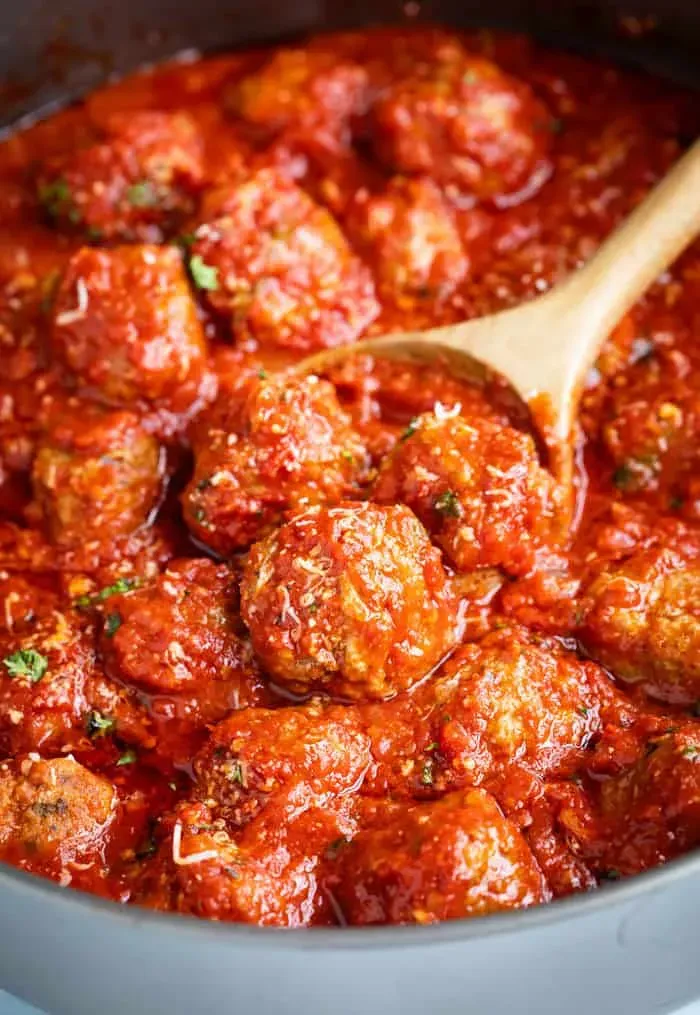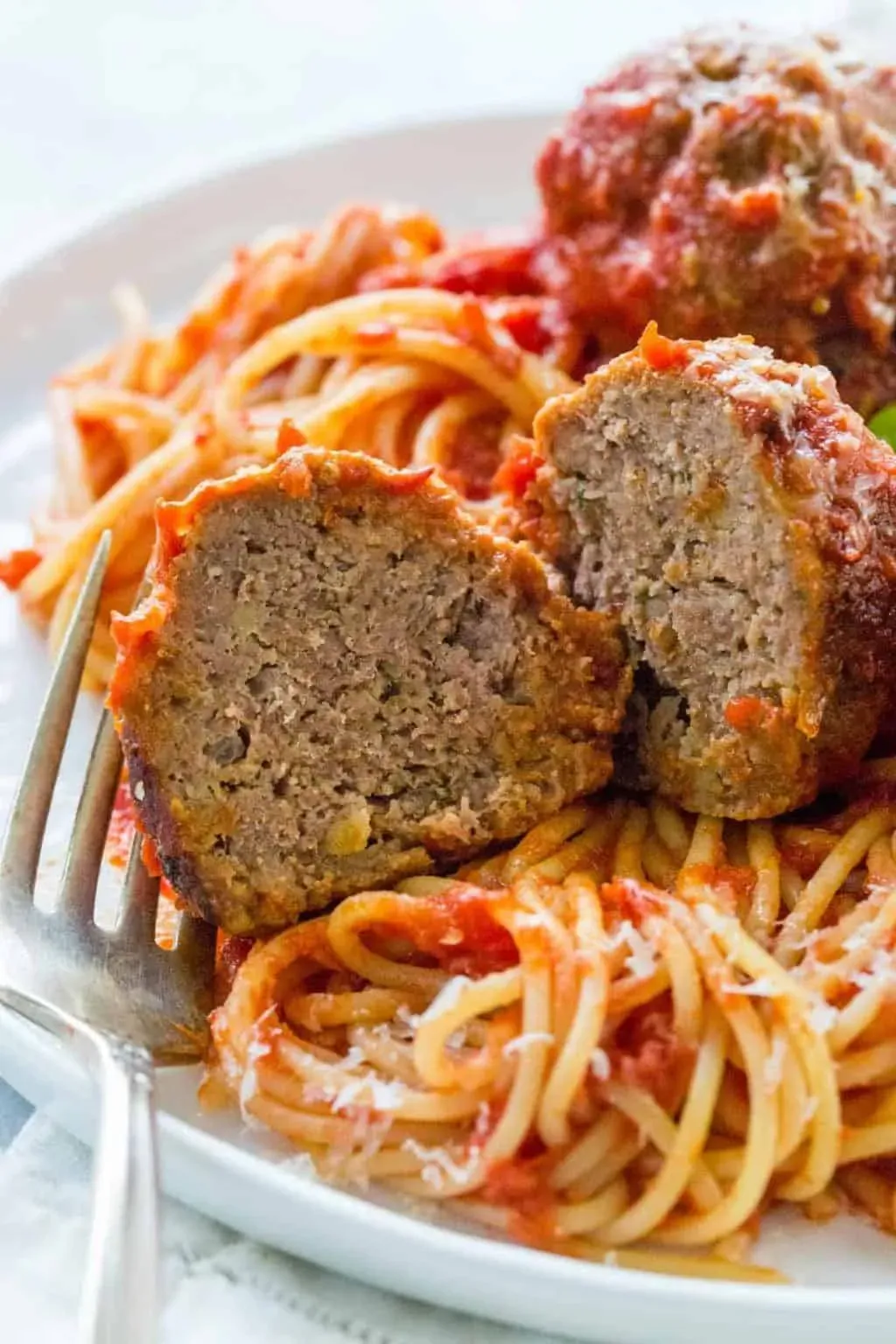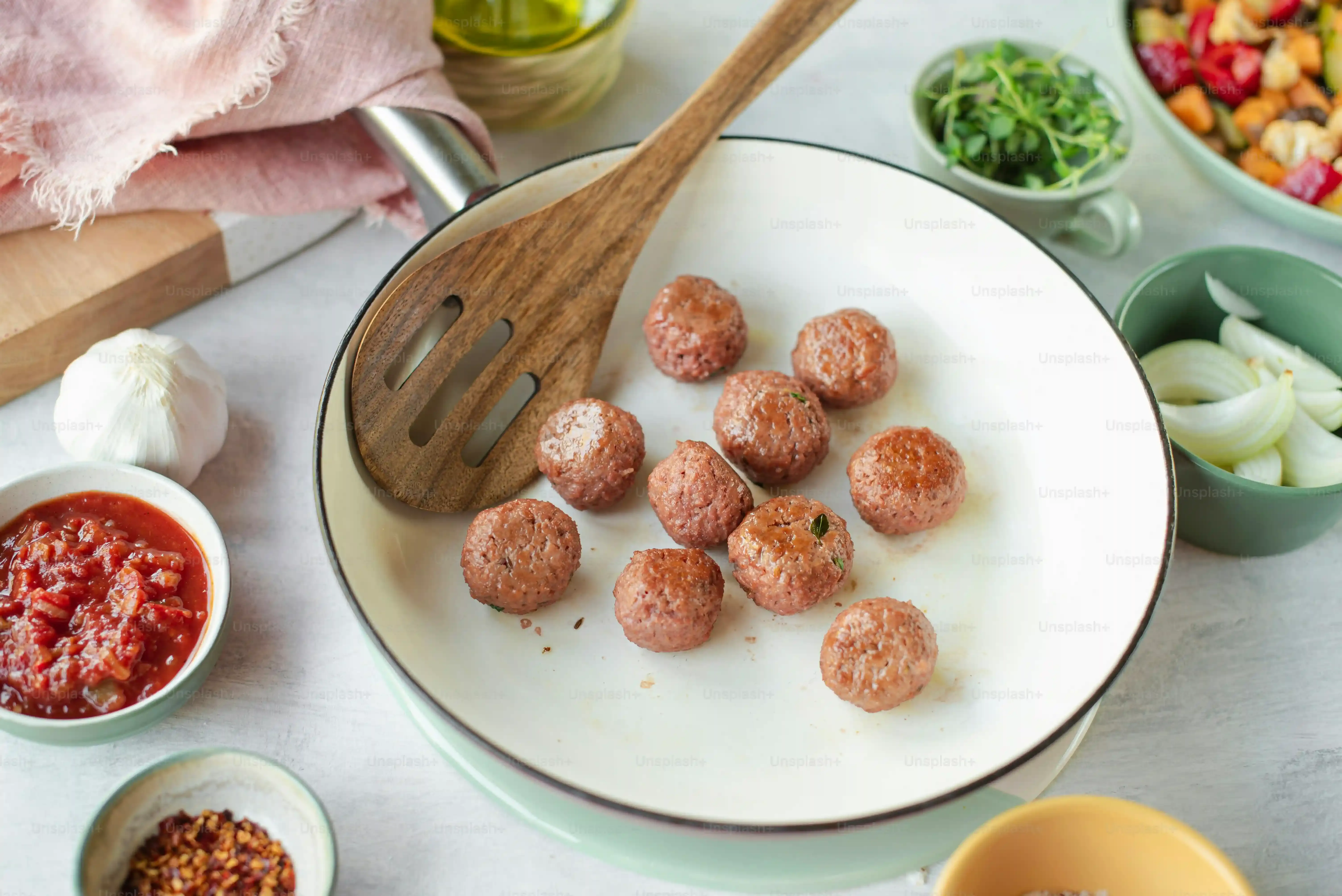Table of Contents
Ever bitten into a meatball and thought, " this is *it*"? Not just a meatball, but *the* meatball. The kind your Nonna might whisper about, the one that tastes like Sunday dinner and a hundred years of family secrets all rolled into one savory bite. Let's be honest, making meatballs seems simple enough – ground meat, breadcrumbs, maybe an egg. Yet, achieving that legendary status, that perfect texture, that depth of flavor? That's where many home cooks hit a wall. You follow a recipe, they come out... fine. Maybe a little dry, maybe a little bland. Not exactly the stuff of legends. This article isn't just another list of ingredients; it's a guide to unlocking the secrets behind a truly famous italian meatball recipe. We'll walk through the critical steps often overlooked, from selecting the right components to mastering the mixing technique and getting that perfect sear. Forget everything you thought you knew about humble meatballs. We're aiming for greatness, the kind that earns you accolades at the dinner table and maybe even a few jealous glances. Get ready to elevate your meatball game from average to absolutely unforgettable.
Unpacking the Famous Italian Meatball Recipe: What Makes it Stand Out?

Unpacking the Famous Italian Meatball Recipe: What Makes it Stand Out?
Beyond Just Ground Meat: The Foundation of Flavor
So, you're diving into the world of the famous Italian meatball recipe. It's not just about slapping some ground beef together. The real magic, the core difference between a decent meatball and one people rave about, lies in the blend of meats. Most truly memorable recipes don't rely on just one kind. You often see a mix of beef, pork, and sometimes even veal. This combination brings different fat levels and flavor profiles to the party. Beef offers that classic savory depth, pork adds moisture and richness, and veal contributes a tender texture. Getting this ratio right is crucial. It prevents dryness and builds a complex base that single-meat meatballs simply can't achieve.
Then there's the binder. Forget dry, crumbly breadcrumbs dumped straight from the box. A famous Italian meatball recipe uses bread – often stale Italian bread or even a soft white bread – soaked in milk or water. This creates a moist, tender interior. Think of it as a built-in humidifier for your meatballs. Add in finely grated Parmesan cheese, fresh parsley, garlic, and maybe a pinch of nutmeg, and you're layering flavors that sing together, not just shout. It’s these foundational elements, the careful selection and preparation of meat and binder, that elevate a meatball from ordinary to noteworthy.
Regional Twists and Secret Ingredients
What makes a famous Italian meatball recipe *famous* often boils down to regional traditions and little personal touches passed down through families. A recipe from Rome might lean heavily on beef and include stale bread soaked in water, while a Neapolitan version might favor pork and veal, using bread soaked in milk and perhaps a touch of pine nuts or raisins for sweetness, though that's less common in the classic versions you find outside Italy. These variations aren't random; they reflect local ingredients and culinary history. Some families swear by a specific type of cheese, maybe Pecorino Romano for a sharper bite instead of just Parmesan. Others might add a tiny bit of crushed red pepper for a subtle warmth.
Sometimes, the "secret" isn't an ingredient at all, but a technique. Maybe it's how aggressively you mix the meat (gentle is usually better for tenderness) or the specific way you brown them before they hit the sauce. My friend's grandmother, who made meatballs that could make you weep with joy, always added a tablespoon of tomato paste directly into the meat mixture. It seemed odd, but it added this incredible depth and slight tang. These aren't just meatballs; they are edible history, little flavor bombs carrying generations of delicious knowledge. Understanding these nuances helps demystify what makes certain meatballs legendary.
What sets a great meatball apart?
- Using a blend of meats (beef, pork, veal).
- Properly soaking the bread binder.
- Generous use of fresh herbs and cheese.
- Regional ingredient variations (like different cheeses or spices).
- Specific family techniques (mixing, pre-cooking).
Crafting Your Own Famous Italian Meatball Recipe: The Essential Steps

Crafting Your Own Famous Italian Meatball Recipe: The Essential Steps
Mixing Matters: Getting the Texture Just Right
Alright, you've got your beautiful blend of meats, your soaked bread, and all those aromatic herbs and cheese lined up. Now comes the critical step in crafting a famous italian meatball recipe: the mix. This isn't a job for a stand mixer with a paddle attachment unless you enjoy tough, dense spheres of disappointment. You need to use your hands. Gently. The goal is to combine everything evenly without overworking the meat. Think of it like kneading dough – too much handling develops gluten, and while that's great for bread, it's the enemy of a tender meatball. Mix until just combined. You shouldn't see streaks of different meats or big clumps of bread, but it shouldn't be a uniform, pasty mass either. Adding the egg (or eggs, depending on your batch size) helps bind it all together, but the soaked bread is doing the heavy lifting for moisture and tenderness.
Forming and Cooking: From Orb to Edible Art
Now for the fun part: rolling. Aim for consistently sized meatballs so they cook evenly. A common size is about 1.5 to 2 inches in diameter – roughly the size of a golf ball, maybe a little smaller. Don't pack them too tightly; a gentle hand is key here too. For cooking, there are two main camps for a famous italian meatball recipe: pan-frying or baking. Pan-frying gives you a fantastic, craggy brown exterior with deep flavor, but it can be messier and requires more attention. Baking is easier and results in a more uniformly cooked meatball, though you might sacrifice some of that caramelized crust. Some folks swear by browning them quickly in a pan first, then finishing them in the sauce. That gives you the best of both worlds: color and flavor from the pan, tenderness and sauce-absorption from simmering. Choose your adventure, but don't skip the initial cooking step before they hit the sauce; raw meatballs simmering in liquid just don't develop the same depth.
Quick Check: Are You On Track?
- Did you use a mix of meats?
- Was your bread properly soaked and squeezed?
- Did you mix gently, not aggressively?
- Are your meatballs roughly the same size?
- Have you decided on your initial cooking method (fry, bake, or both)?
Troubleshooting Your Famous Italian Meatball Recipe: Avoiding Common Mistakes

Troubleshooting Your Famous Italian Meatball Recipe: Avoiding Common Mistakes
Troubleshooting Your Meatballs: Where Things Go Wrong
Even with the best ingredients and intentions, making a truly famous italian meatball recipe can hit bumps. The most common culprit for a disappointing outcome? Dry meatballs. This usually stems from using lean meat, overmixing the mixture, or not having enough moisture from the binder. Another frequent issue is a tough texture, almost like a bouncy ball, which is almost always due to overworking the meat proteins during mixing or forming. Sometimes, the flavor just doesn't pop; this often happens when you're shy with the garlic, herbs, or salt, or you skip the crucial step of browning them before simmering. Getting a good sear isn't just for color; it builds foundational flavor through the Maillard reaction. Ignoring these details means you end up with bland, hard little rocks instead of tender, flavorful spheres.
Serving Your Famous Meatballs: Beyond the Sauce

Serving Your Famous Meatballs: Beyond the Sauce
The Classic Pairing: Spaghetti and the Sauce
so you've put in the work, mastered the blend, mixed gently, and cooked these beautiful, tender spheres. Now, how do you present your famous italian meatball recipe? The most obvious, and arguably the most beloved, way is draped over a bed of spaghetti, swimming in a rich, slow-simmered tomato sauce. This isn't just tradition; it's a perfect marriage of textures and flavors. The soft meatballs soak up the tangy sauce, and the pasta provides the ideal vehicle to get it all from plate to mouth. Don't just dump the meatballs on top; let them simmer in the sauce for at least 20-30 minutes before serving. This allows them to finish cooking gently in the liquid, becoming even more tender, and infuses the sauce with their savory goodness. It's the standard for a reason, a comforting, hearty meal that speaks volumes without saying a word.
Beyond the Noodle: Creative Serving Ideas
While spaghetti and meatballs are iconic, limiting your famous italian meatball recipe to just pasta is like owning a Ferrari and only driving it to the grocery store. These meatballs are versatile. Think outside the box. They make incredible heroes or subs, piled high on crusty bread with melted mozzarella and extra sauce. Slice them up and toss them with roasted vegetables for a low-carb option. Skewer them and serve them as appetizers at a party – trust me, they disappear fast. You can even drop them into a simple broth with some greens for a lighter, soupier take. Each method highlights a different aspect of the meatball, proving their worth extends far beyond the pasta bowl.
Serving Your Famous Meatballs:
- Classic Spaghetti & Sauce
- Meatball Subs/Heroes
- With Roasted Vegetables
- As Party Appetizers (Skewered)
- In a Light Broth or Soup
Finishing Touches: Garnishes and Presentation
You wouldn't wear a tuxedo without cufflinks, would you? Don't serve your famous italian meatball recipe naked. Presentation matters. A generous sprinkle of freshly grated Parmesan cheese is non-negotiable. It adds a salty, nutty punch that elevates every bite. Chopped fresh parsley or basil provides a pop of color and a fresh, aromatic counterpoint to the rich sauce and meat. A drizzle of good quality olive oil over the finished dish can add a touch of luxury. And make sure the sauce-to-meatball ratio is right; you want them coated, not drowning, unless it's a soup. Simple garnishes turn a plate of food into something that looks as good as it tastes, showing you cared about the details.
Your Famous Meatball Journey Ends (and Begins) Here
So there you have it. The path to a truly famous italian meatball recipe isn't paved with mystery ingredients or ancient incantations, but with attention to detail and a willingness to do things right. We've talked through the meat blend, the binder balance, the gentle touch, and the crucial cooking method. Ditch the dry, the dense, the disappointing. With these insights, you're equipped to create meatballs that are tender, flavorful, and genuinely memorable. They might not be *the* famous recipe from that one restaurant in Rome you visited once, but they'll be *your* famous recipe, passed down or simply enjoyed by everyone lucky enough to snag a plate. Now go forth and make some magic.